Gulf Trade
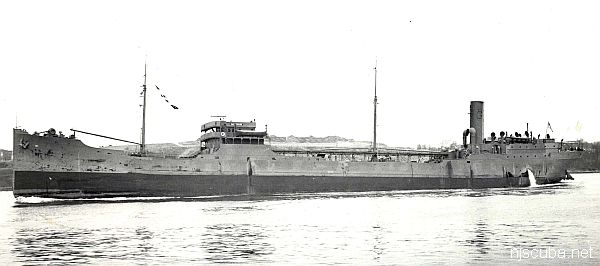
- Type:
- shipwreck, tanker, USA ( Gulf Oil )
- Name:
- One of a series of ships owned by Gulf Oil company, all named "Gulf ____"
- Built:
- 1920, Sun Shipbuilding, Chester PA USA
- Specs:
- ( 430 x 59 ft ) 6776 gross tons, 34 crew
- Sunk:
- Tuesday March 10, 1942
torpedoed by U-588 - 18 casualties - Depth:
- bow - 60 ft ; stern - 90 ft
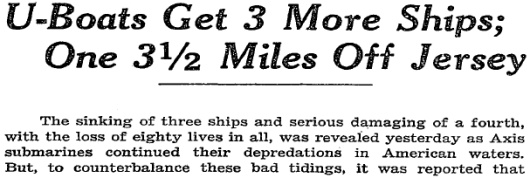

The Gulf Trade broke in half behind the bridge after being torpedoed, not uncommon for an oil tanker. Many of the crew died in the ensuing inferno, and the escorting Coast Guard cutter was almost torpedoed while attempting their rescue. The bow grounded on the spot and has since been reduced to rubble, but the stern drifted almost ten miles to deeper water and is more intact.
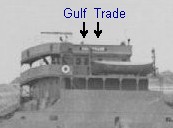
An old photo shows this vessel's correct name to be "Gulf Trade" - two words rather than one. However, it is more commonly known as the "Gulftrade" ( or sometimes as the "Gulftrader". ) It's not very clear here, but it is quite legible in the original photo.
The stern is a very big wreck that rises 20 ft off the bottom in places, although most of the wreckage is lower and jumbled. Cavernous spaces in the big part of the wreck are easily penetrated. The wreck is easily navigated since it is contiguous with well-defined edges. It is festooned with monofilament and old wire lobster pots, so many that I think someday when the wreck is gone, you will still be able to dive the pile of traps.
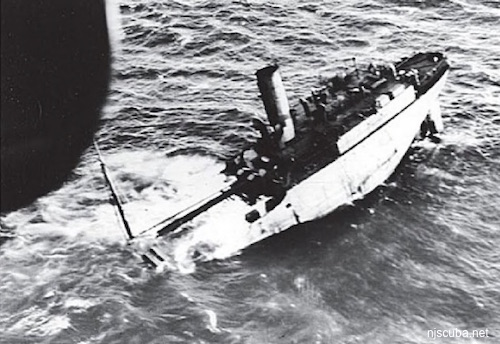
One point of reference is the triple-expansion steam engine. However, you can easily miss it, as it is very broken-down, with only one of the three cylinders intact. What made me take a closer look was a crank arm leaning against the wreckage, looking like a six-foot box-end wrench. The boiler is nearby, but so large that you might not at first realize what it is. Broken fire tubes are exposed at the far end. There is also a great deal of piping, which you would expect on an oil tanker.
The Gulf Trade is for the Barnegat boats what the Mohawk is for the Manasquan / Belmar boats, and it gets hit just as often. The result is that, like the Mohawk, it is often pretty fished out. For the northern boats, it can be a rather long ride to catch nothing.
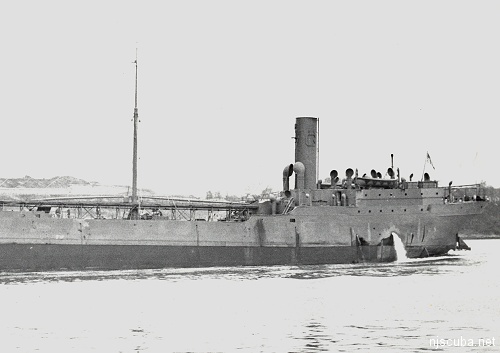
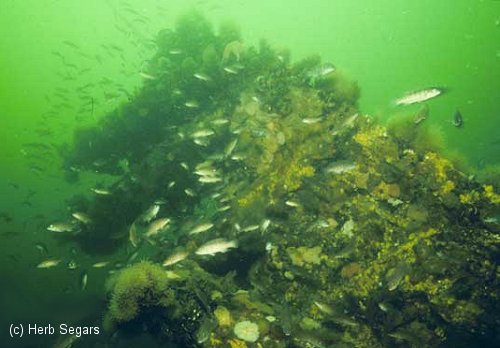
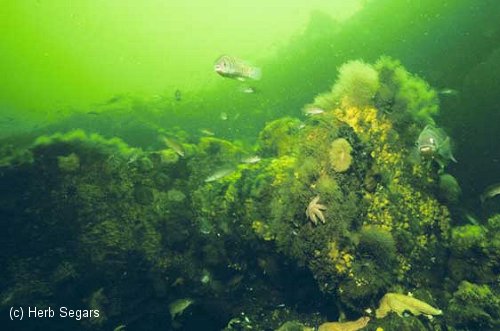
Gulf Trade

The tanker Gulf Trade was built in 1920 by Sun Ship Building Co., Chester, Pennsylvania. She was 430 feet long, 59 feet wide, and weighed 6,776 gross tons. The Gulf Trade had been running blacked out in accordance with Navy policy for avoiding U-Boats, but because there were other ships in the vicinity and in order to reduce the possibility of collision, her running lights were turned on. On March 10, 1942, under the command of Captain Torger Olsen, while en route from Port Arthur, Texas, to New York with a cargo of 80,000 gallons of fuel oil, a torpedo from the U-588 exploded amidships, breaking the tanker in two.
Fire filled the night sky. The Antietam , a Coast Guard vessel, rushed to her aid. Rescuers were able to pick up eight men including the captain from one of her stern lifeboats. Unfortunately, the Antietam wasn't able to maneuver closer since a line had fouled in her propeller. On the still floating stern section remained seven men waiting for help. Two hours later, the seven were taken off by the Navy tender Larch. Out of a total of 34 men, only 16 survived.
Today, the Gulf Trade is actually two dive sites. The scattered bow section is resting in 60 feet of water, eight miles from Barnegat Inlet. The bow wreckage was blown up so as not to cause a hazard to navigation. The stern section drifted about ten miles before settling in deeper water of 90 feet, 13 miles from Barnegat Inlet. Her stern section was not left alone after sinking either, but was wire dragged clear to a depth of 50 feet for safe navigation.
Excerpted from Wreck Valley CDROM by Dan Berg
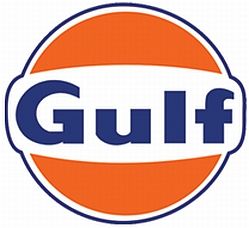
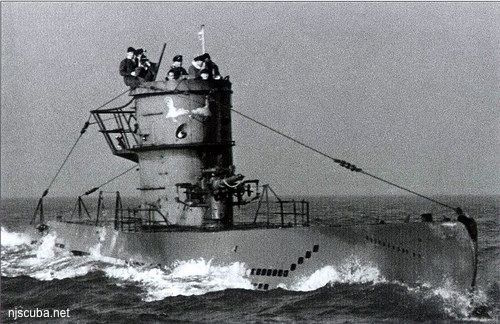


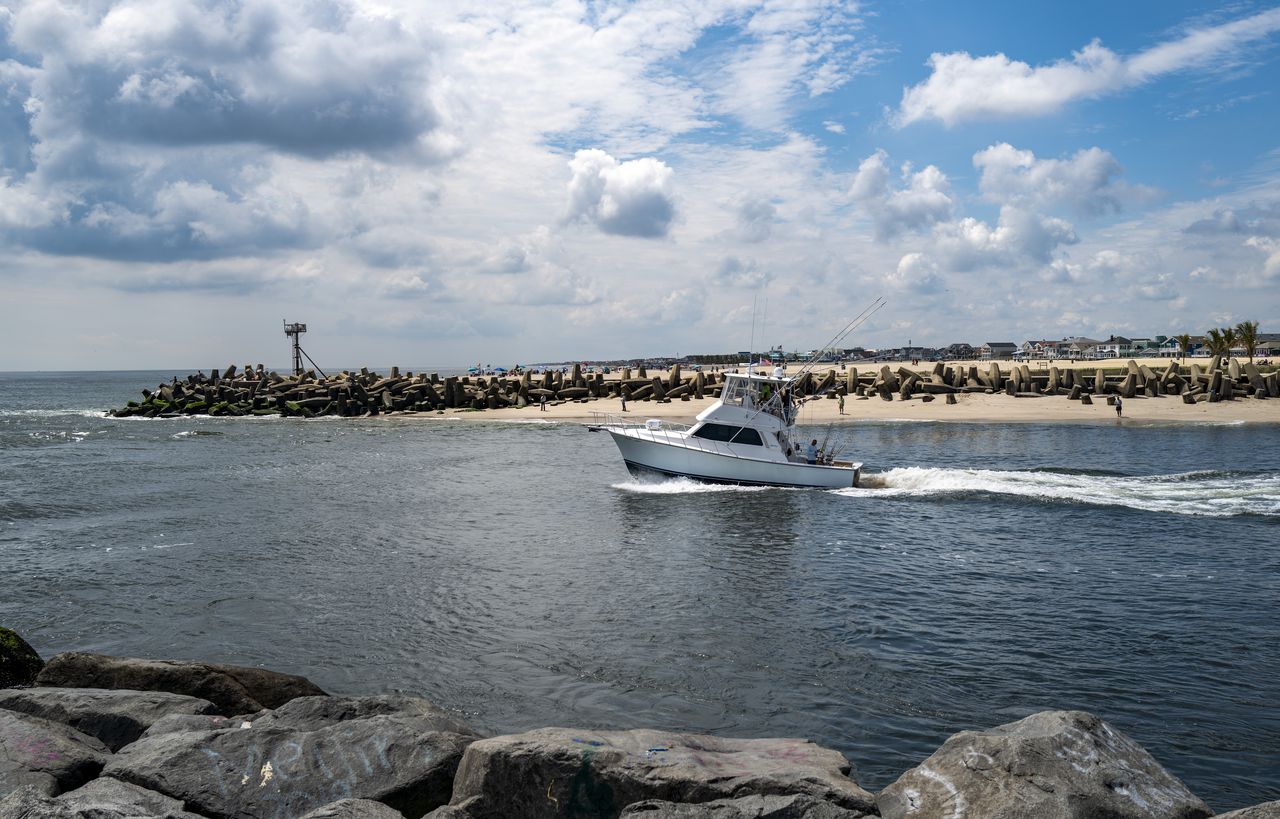
Questions or Inquiries?
Just want to say Hello? Sign the .